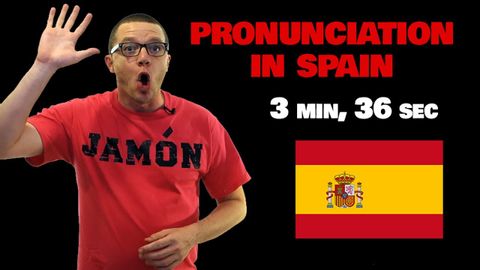
Subtitles & vocabulary
Spanish Pronunciation in Spain
00
Wallace posted on 2014/06/12Save
Video vocabulary
subscribe
US /səbˈskraɪb/
・
UK /səb'skraɪb/
- Verb (Transitive/Intransitive)
- To regularly pay to receive a service
B1TOEIC
More pronunciation
US /prəˌnʌnsiˈeʃən/
・
UK /prəˌnʌnsiˈeɪʃn/
- Noun (Countable/Uncountable)
- How a word is said; how a word sounds
- The manner in which someone utters a word.
B1
More start
US /stɑrt/
・
UK /stɑ:t/
- Noun (Countable/Uncountable)
- First time or place that a thing exists; beginning
- Beginning of something in place or time
- Verb (Transitive/Intransitive)
- To do, be or happen for the first time; begin
A1
More sound
US /saʊnd/
・
UK /saʊnd/
- Adjective
- Sensible, dependable and reliable
- Unbroken or undisturbed, as of sleep
- Noun (Countable/Uncountable)
- Unique quality that characterizes a style of music
- Waves traveling in air or water that can be heard
A1TOEIC
More Use Energy
Unlock All Vocabulary
Unlock pronunciation, explanations, and filters
